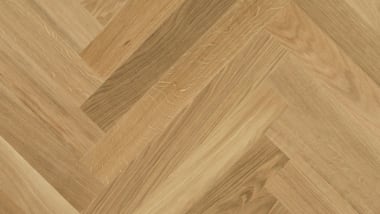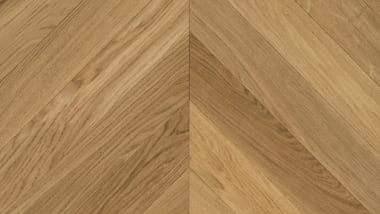Understanding Green Star Certification: What It Is and Why It Matters
12 Aug 2025
Discover what Green Star certification entails, why it is crucial for sustainable development, and how it benefits both the environment and building occupants. Learn about the key evaluation criteria, economic advantages, and practical steps to achieving certification. Read on to explore how Green Star is shaping the future of eco-friendly construction.
Green Star certification is Australia’s leading sustainability standard for buildings and communities. Learn what it involves, how to get certified, and why it delivers environmental, health and economic benefits for projects of every scale.
Green Star: A Benchmark for Sustainable Building
As the construction and design industries move toward more sustainable and environmentally responsible practices, Green Star certification has emerged as a key benchmark for sustainable building in Australia. Understanding what Green Star is, why it is important, and how it benefits both the environment and building occupants, and can help developers, architects, and home owners make more informed decisions when selecting materials and designing spaces.
What Is Green Star Certification?
Green Star is an internationally recognised sustainability rating system developed by the Green Building Council of Australia (GBCA). Launched in 2003, it provides a comprehensive framework for assessing the environmental impact and sustainability performance of buildings, fitouts, and communities.
The Green Star system includes four tailored rating tools:
- Green Star Buildings: for new builds and major refurbishments
- Green Star Interiors: for commercial and institutional fitouts
- Green Star Performance: for existing buildings in operation
- Green Star Communities: for master-planned precincts and large-scale developments
The rating system evaluates buildings across several key categories:
- Energy Efficiency: Measures the building’s energy consumption and carbon emissions.
- Water Use: Evaluates water efficiency, conservation, and recycling.
- Indoor Environmental Quality: Assesses air quality, natural light, and thermal comfort.
- Materials: Encourages the use of sustainable, responsibly sourced materials.
- Land Use and Ecology: Considers biodiversity, green space, and urban planning.
- Emissions: Evaluates the reduction of pollution, including carbon footprint, waste, and refrigerant gases.
Based on performance against these criteria, buildings can achieve one of the following Green Star ratings:
- 1 Star: Minimum Practice
- 2 Star: Average Practice
- 3 Star: Good Practice
- 4 Star: Best Practice
- 5 Star: Australian Excellence
- 6 Star: World Leadership
These ratings reflect the extent to which a project exceeds minimum sustainability standards and delivers lasting environmental, social, and economic value.
Enduring House - passive house refurbishment using Havwoods PurePlank FSC® Certified (C009500) timber flooring
How the Green Star Certification Process Works
Achieving Green Star certification involves a structured process administered by the Green Building Council of Australia (GBCA). From registration through to final assessment, the process ensures each project is thoroughly evaluated against nationally recognised sustainability benchmarks.
Here’s how it works:
- Project Registration
Begin by registering your project with GBCA and selecting the appropriate Green Star rating tool — such as Buildings, Interiors, Communities or Performance. - Design & Strategy
Engage with sustainability consultants and stakeholders early to develop a plan that targets specific Green Star credits and aligns with your project's sustainability goals. - Documentation & Evidence
Prepare and collect supporting evidence, including material certifications, energy modelling, lifecycle assessments, and performance data. This documentation will be submitted for review. - Assessment
Submit your application and documentation to GBCA. Independent certified assessors evaluate the submission and determine the level of compliance based on credit achievement. - Certification Awarded
Once reviewed, the project is awarded a Green Star rating (1, 2, 3, 4, 5, or 6 Star) reflecting its overall sustainability performance.
Each stage requires coordination across the design, construction, and delivery teams, but with the right planning, Green Star certification is an achievable and rewarding outcome.
Green Star Certification Costs
Green Star certification fees vary depending on the project’s type, size, and value, as well as whether the applicant is a GBCA member.
Here’s a general guide to how fees are structured:
- Green Star Buildings: Certification fees are based on the total construction contract value.
- Green Star Interiors: Fees are determined by the overall fitout value.
- Green Star Communities: Fees scale with the number of lots or dwellings included in the development.
Additional fees may apply for services like fast-tracking, resubmissions, or formal queries.
For the most accurate and up-to-date pricing, visit the GBCA Green Star certification fees page.
Havwoods Venture Plank HW3676 Aspen Raw timber flooring featured in living room of a residential project.
Why Is Green Star Certification Important?
Green Star certification is more than just a sustainability rating, it is a commitment to responsible building practices that benefit the environment, occupants, and communities. Here’s why it matters:
- Environmental Benefits
Buildings account for nearly 40% of global carbon emissions. Green Star certification helps to reduce environmental impact by promoting energy efficiency, reducing water consumption, and encouraging the use of eco-friendly materials in buildings.
Green Star certified buildings incorporate renewable energy sources such as sustainable timber and advanced water recycling systems, significantly reducing their ecological footprint. - Health and Well-Being
The quality of indoor environments has a direct impact on human health and productivity. Green Star-certified buildings prioritise indoor air quality, natural ventilation, and access to daylight, creating spaces that support occupant well-being. Improved air filtration systems and low-VOC (volatile organic compound) materials reduce exposure to harmful toxins, making these spaces healthier for residents, employees, and visitors. - Cost Savings and Economic Value
While sustainable buildings may have slightly higher upfront costs, they often result in long-term savings through reduced energy and water bills. Green Star-certified buildings have lower operational costs due to improved efficiency, making them financially attractive in the long run. Additionally, sustainability credentials can enhance property value and rental returns, making Green Star an important consideration for investors and developers. - Regulatory and Market Demand
Sustainability in the built environment is becoming a legal and market-driven necessity. Governments and councils are implementing stricter environmental regulations, and businesses are increasingly looking to lease or invest in green-certified buildings. Consumers and corporate tenants are also prioritising sustainability, meaning that Green Star certification can provide a competitive edge in the real estate market. - Contribution to Net-Zero Goals
Green Star is not just a sustainability rating, it’s a tool that aligns with Australia’s broader transition toward a low-carbon, climate-resilient built environment.
The latest version, Green Star Buildings v1.0, is designed to directly support:- Australia’s National Net Zero Targets: helping the building and construction sector reduce embodied and operational carbon in line with the federal government’s climate commitments.
- Climate Active certification pathways: offering a structured framework to help buildings meet the criteria for carbon neutrality.
- NABERS Integration: ensuring energy performance metrics used in Green Star align with NABERS Energy ratings, allowing for streamlined compliance and performance verification.
For developers and design teams focused on climate-responsive architecture, Green Star offers a practical, nationally recognised pathway to net-zero-ready outcomes.
Macquarie University Michael Kirby Building featuring Havwoods timber flooring througout.
How to Achieve Green Star Certification
Achieving Green Star certification requires careful planning and execution throughout the design, construction, and operational phases of a building. Here are some key steps involved:
- Engage Sustainability Consultants: Working with professionals who specialise in Green Star certification ensures that all requirements are met from the outset.
- Incorporate Sustainable Design Principles: Maximising energy efficiency, water conservation, and material sustainability during the design phase helps streamline the certification process.
- Use Certified Sustainable Materials: Opting for FSC® certified timber, low-carbon concrete, and other sustainable materials contributes to higher Green Star ratings. Explore Havwoods collection of sustainability certified products here.
- Implement Energy and Water Efficiency Systems: Installing solar panels, energy-efficient lighting, smart metering, and water recycling systems improves performance.
- Submit for Green Star Assessment: The GBCA assesses projects based on the criteria met and awards the appropriate certification level.
How Green Star Compares to LEED, WELL and BREEAM
While Green Star is Australia’s leading sustainability rating system, many projects - especially those involving international teams or global benchmarks - also consider overseas standards like LEED, WELL, and BREEAM. Each offers a unique approach to evaluating sustainability in the built environment.
Here’s how they compare:
- LEED (USA): A globally recognised system that focuses on environmental performance across categories such as energy, water, and materials. LEED uses different energy modelling assumptions and regional benchmarks, which can make direct comparisons with Australian projects more complex.
- WELL Building Standard: Centres on occupant health and wellness, evaluating factors such as air, water, nourishment, light, fitness, and comfort. WELL complements Green Star by deepening the focus on human-centric design but does not evaluate environmental impacts to the same extent.
- BREEAM (UK/EU): One of the earliest sustainability rating systems, BREEAM shares a similar multi-category approach to Green Star but is more commonly used in the UK and Europe. It places significant weight on lifecycle assessment and ecological protection.
Green Star aligns well with all three systems in its structure and intent but provides localised relevance for Australian conditions, including climate zones, supply chains, and regulatory frameworks. Importantly, Green Star also recognises certifications like Responsible Wood (Australia’s PEFC-endorsed scheme), which may not be fully acknowledged in international tools.
For Australian projects, Green Star offers a tailored, future-focused framework that supports compliance, local supply chain transparency, and national sustainability targets — without compromising global comparability.
Green Star Certified Projects Featuring Havwoods Timber
| Project | Green Star Certification Rating | Architect / Designer / Developer | Havwoods Product Used |
| Salesforce Tower in Sydney Place | 6 Stars | Designed and managed by JLL Developed by Lendlease | Lucerne PurePlank FSC® Certified (C009500) timber flooring |
| WPP Sydney Campus | 5 Stars | Architect: Woods Bagot Builder: Buildcorp | Avoca from the Havwoods H Collection, custom order FSC® Certified (C009500) stock |
| GPT Premium Suites, Brisbane | 6 Stars | Architect: BVN | HW12340 Lavardon timber from Havwoods PurePlank 2.0 FSC® Certified (C009500) collection |
| QBE Insurance Group, Sydney Office | 6 Stars | Architect & Designer: GroupGSA | HW12335 Clermont timber from Havwoods PurePlank 2.0 FSC® Certified (C009500) collection |
How Havwoods Products Can Help You Achieve Green Build Certification
At Havwoods, we are dedicated to providing timber solutions that meet the highest industry standards for sustainability.
Products like FSC® Certified timber can contribute to the Responsible Building Materials credit under Green Star Buildings, and our timber collections include FSC®certified (C009500), PEFC certified, Cradle to Cradle®certified, and FloorScore® certified products - ensuring excellence in both environmental responsibility and quality.
With a wide selection of sustainably certified timber flooring and interior panelling, you can create a project that not only meets Green Build requirements but also delivers exceptional aesthetics and functionality.
Explore all of our sustainability certified products here or get in touch to speak with an expert.
QBE Insurance Group - Green Star Certified 6 Stars - featuring Havwoods HW12335 Clermont timber flooring, PurePlank 2.0 collection
Final Thoughts
Green Star certification is a vital tool in the journey toward sustainable, resilient, and environmentally friendly construction. As the demand for green buildings grows, developers and architects who prioritise Green Star principles will not only contribute to a healthier planet but also create spaces that are efficient, cost-effective, and future-proof.
Whether you are designing a new commercial office, residential development, or community project, incorporating Green Star strategies ensures a positive impact on both the environment and the people who use the space. As sustainability continues to shape the future of design and construction, Green Star certification remains a powerful standard for leading the industry toward a greener tomorrow.
Visit a Havwoods showroom or get in touch to speak with one of our experts to discuss how our sustainability certified products can assist you in delivering a successful Green Build project.
 | AuthorTony TrajkovskiHead of Technical and Installation, Havwoods Tony Trajkovski brings with him over 25 years of experience working with timber across the retail and commercial sectors, including large-scale developments. Read more → |




















































